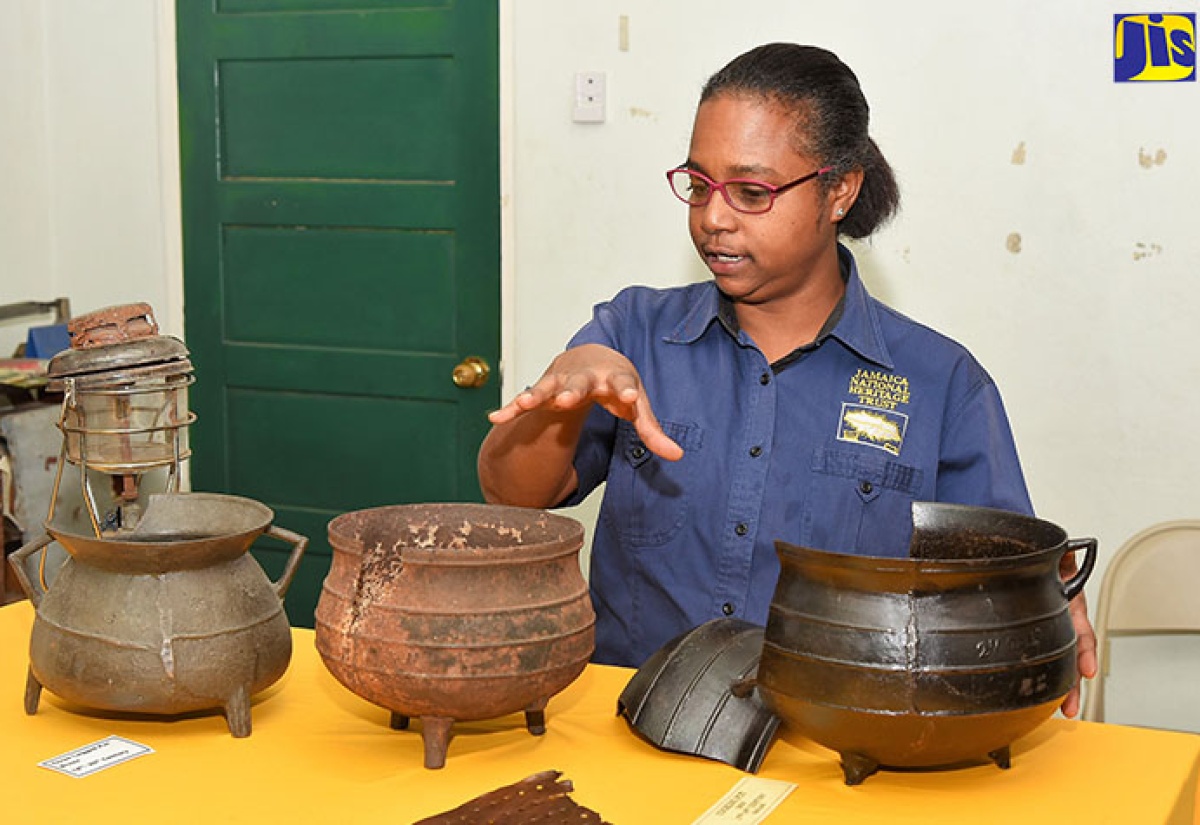The JNHT will preserve Your Artefacts
By: , October 30, 2017The Key Point:
The Facts
- JNHT Conservator, Evelyn Thompson tells JIS News that although the major thrust of the entity is on the preservation of Government of Jamaica artefacts, the organisation, from time to time, offers this service to private collectors upon request.
- At the moment, the JNHT is preserving some 200 cannonballs that were recovered from underwater excavations at Port Royal.
The Full Story
Don’t throw away that old copper pot or brass candleholders your great-grandmother left for you. They may be very valuable.
Instead, take them in for assessment and preservation by the Jamaica National Heritage Trust (JNHT), the entity responsible for the conservation of Jamaica’s artefacts.
JNHT Conservator, Evelyn Thompson tells JIS News that although the major thrust of the entity is on the preservation of Government of Jamaica artefacts, the organisation, from time to time, offers this service to private collectors upon request.
“We would encourage people who are desirous of protecting their objects for posterity to contact us, and we can facilitate your process,” she says.
Persons can contact the JNHT, situated at 79 Duke Street, south of Jamaica’s Parliament building in Kingston.
She informs that the JNHT educates persons on the proper treatment of such relics, from the point of excavation through to the various handling stages and how to create the most suitable environment to extend the life of the object.
She notes that while people believe that an air-conditioning system is sufficient for maintaining conditions in the room in which the items are stored, this only slows down the rate of deterioration but does not stop it.
As such, she says, “we also do conservation assessment of your environment to see what factors might be causing the deterioration of your objects. If you have an exhibition up, or if you have your artefacts in storage, we can assist you.”
For collections under the care of the JNHT, preventive conservation is undertaken to avoid or delay deterioration and damage to collections.
“We control the environment in an effort to make sure that the object remains stable,” Miss Thompson explains.
She tells JIS News that for private collections, a fee is charged for the use of electricity, the purchase of chemicals, if needed, and instruments to set up the preservation procedure.
“If we are using just a straight chemical method for treatment of the object, we are looking at cost in terms of the purchase of the chemical; we are looking at the cost of the time of the staff, because they have to be paid to execute the process,” she points out.
Miss Thompson says that the process “is not inexpensive,” but “when one thinks of the fact that it extends the life of your objects then you realise that it is indeed an invaluable process”.
At the moment, the JNHT is preserving some 200 cannonballs that were recovered from underwater excavations at Port Royal.
Now a fishing village, Port Royal was destroyed by a massive earthquake in 1692, and a large portion of the town sank into the sea.
“We have the largest pewter collection in the world. In its heyday, Port Royal was the centre of the western hemisphere, and, consequently, there was a large cross section of merchandise that were there in use as well as being traded. So, we have a large cross section of artefacts from the sunken city as well as some that were actually on land,” she informs.
To preserve the cannonballs, Miss Thompson explains that salt and other corrosion products are extracted by a process called “electrolytic reduction”.
“After the salt and corrosion products are removed, we would dry them and remove any water that is in the body of the cannonballs and we put a stabilising coat on and then we lacquer,” she says, adding that the entire process takes about two to three years.
Conservation work is also ongoing on a collection of items from Seaford Town in Westmoreland, also known as German Town.
Miss Thompson tells JIS News that the artefacts were donated to the German Town museum over a period of time.
She says that most of the artefacts where donated by Germans who had settled in the island over 200 years ago. Among the items are a tailor’s iron, a chest, candle stands, a lantern, ceramic containers, bottles, pots, a bottle with a churner, and religious ceremonial pieces.
“We have been asked to conserve them. Once we have completed them, we will be passing them back to the German Town museum,” she informs.
Miss Thompson tells JIS News that the JNHT is also responsible for the preservation of artefacts that are on loan to institutions overseas.
The Conservator says she recently visited London, where some of the JNHT’s artefacts are on loan to a foundation.
“I went to assess the state of the artefacts, and that assessment factored in a meeting to discuss the way forward,” she says.
“So, the artefacts we have in Jamaica are important not only for Jamaica but for the entire world,” she notes.


